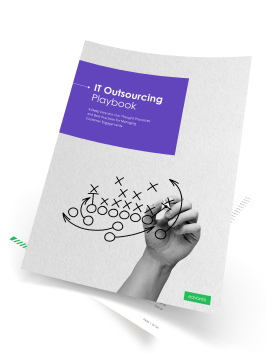Mergers and Acquisitions (M&A) have always been a proven framework for rapid business growth. You acquire new customer bases, operational capabilities, and extra brand equity instead of nurturing them in-house.
In 2021, global M&A activity broke $5 trillion — up from the previous record of $4.77 trillion in 2007. That’s a 68% spike compared to 2020. The bullish dealmaking is a strong indicator that businesses are preparing for the new growth cycle — one led by digital partnerships and economies of scale.
Platform players like Amazon have proved that operating an ecosystem of products and services (developed in-house and aggregated from partners) gives substantial leverage for rapid expansion. So many smaller players are also looking for ways to grow through strategic partnership deals and acquisitions.
Yet, signing the buying deal is just part of the M&A process. The real work begins afterward. You must then achieve synergy between your business and its new arm regarding operational alignment, service/product portfolio standardization, and IT integration.
Since many businesses are digital in their core, more times than not, a significant bulk of effort goes into technology merger integration.
Why IT Plays a Focal Role in Post-Merger Integration (PMI)
According to Bain & Co., over 50% of business synergies are technology-enabled, meaning the acquirer seeks to profit from the technology the acquired company has developed. Data from Accenture mirrors this sentiment: among the recent high-value transactions, 80% of companies placed a significant emphasis on technology.
However, many leaders tend to underestimate the importance of IT integration in mergers and acquisitions.
Only 56% of decision-makers considered IT issues during the due diligence phase.
Deloitte
This is a significant oversight because the costs and complexities of IT integration in M&A can stall operational plans and dramatically increase the project timeline.
For example, a bank acquiring a payment company may overlook that its legacy core systems are not technologically compatible with the modular microservices architecture the acquired payment app uses. Post-M&A, this would leave the IT team under pressure to re-architect the existing systems, build new data integration, and otherwise technologically reconcile the two different products. Also, if you lack in-house expertise for such projects, this would create further chaos and delays.
Sometimes, you can opt for “quick patches” to harmonize disparate technical systems. However, the underlying integration problems won’t entirely disappear and will accumulate as technical debt.
As Bain cautions, the lack of preliminary planning for process, systems, and data integrations magnifies the post-merger integration costs.
Source: Bain — Mastering Process and Systems Integration After a Merger
Therefore, the earlier you involve the IT teams in the M&A process — the sooner you’ll complete subsequent transformations and start profiting from the acquired solutions.
How to Approach IT Integration in Mergers and Acquisitions: 6 Best Practices
M&A is a step-by-step activity. You must complete tasks at every stage of the deal to move on to the next one. You should apply the same systematic thinking to IT integrations.
The steps will largely depend on your selected post-M&A IT integration strategy. Most consider two options. Either:
- Adopt the IT infrastructure of one party: This is a safer better, which requires fewer reworks. You’ll need to create an integration plan focusing mainly on new user onboarding, knowledge transfer, and specialists’ training.
- Merge the two IT environments: This is a long-term option designed to level-set the tools, technologies, and processes simultaneously. Such alignment requires a more in-depth post-M&A integration plan. You’ll also need strong technical expertise.
Overall, a working post-merger integration plan consists of such main milestones:
- Technical systems merger and integration issues resolution
- Data integrations and data migration (where necessary)
- IT processes homogenization and optimization (to reduce overlaps)
- Technical portfolio rationalization — to remove redundant apps/vendors
- Processes and tools harmonization to improve team collaboration
- Identification of the following steps for improvement
Finally, you have to pull off the above post-acquisition integration plan without disrupting your core operations. That’s a major task, especially if your in-house IT teams already have their hands complete with other operational priorities or lack knowledge of the newly acquired systems.
In such cases, many leaders choose to partner with external integration consultants — a team that could step in to cross off the above tasks and develop a repeatable model for post-M&A integrations. That’s what we often do at Edvantis.
To better show how it’s worth approaching, we’ll use a sample project of integrating work environments for two teams as a reference point, executed with our post-acquisition integration framework.
1. Perform Pre-Integration Planning
IT people can help you estimate the scope (and associated costs and timelines) of work required to fully integrate your systems with those of a target company. Specifically, they can:
- Advice on the likely post-acquisition integration issues that can spike costs and open up certain risks.
- Suggest application consolidation and changes in IT procurement for both organizations to streamline operations.
- Propose different IT integration approaches — co-existence, absorption, or a hybrid version of operating two IT landscapes.
All of the above should happen at the pre-planning stage — a “headspace” when strategizing how the joint IT landscape should look and function.
At this stage, we recommend to:
- Conduct an inventory of tech systems at both ends. Map overlaps and gaps/differences between your technology assets and processes. Identify candidates for consolidation.
- Define system dependencies and limitations. For example, if one of your systems requires 99%/month uptime by contract, think about how you’ll maintain this SLA during the integration phase.
- Analyze different migration and integration options. Your goal is to determine what costs are associated with other approaches. For example, whether you should perform full-scale data migration from the target company systems or just build API-based integrations to enable data exchanges.
- Develop reference project architecture. Confirm that all requirements for integration are feasible. Create references for new systems, workflows, and data repositories.
At the end of this stage, you should have the following outputs:
- Overview of source and target systems with supporting documentation
- List of technical limitations, risks, and caveats
- Stakeholder management plan for execution
- The first test migration candidate
- Full-data migration and/or Delta migration plans
- Full integration/migration roadmap with key milestones
2. Plan the Scope for a Test Run
Technology merger integration rarely occurs in one go because of the risks to business continuity. It’s more of an iterative process where you progressively migrate and align different elements of the IT portfolios.
Therefore, we suggest starting with a “test candidate” — a system that will serve as a reference for all subsequent candidates. This allows you to create a compelling and repeatable model for carrying out post-M&A migrations with high confidence.
For this post, we came up with a quick study. Let’s say a company just acquired a new tech subsidiary and wants to rapidly integrate the target company’s IT teams into their work environment.
To do that, the company needs to:
- Migrate and consolidate work environments such as JIRA, Confluence, and IDEs.
- Migrate and consolidate data from other business apps such as Track, JIRA Server, Notion, and Azure DevOps.
All of the above should happen without interruptions to the parent company workflows. One way to do so is to use the “follow the sun model.” In this case, your IT integration services provider can perform migration (with planned downtimes) during off-work hours without interfering with the core team(s) work.
Then, the IT integration process will go like this:
- Test run: We create test target instances and set up the new environments. Define the main outputs and validate the data outputs against the objective. Then, migrate data and merge workflows, task branches, etc.
- Transition period plan: At the same time, we also set up a backup plan to ensure easy roll-back in case of any issues. We test all the new environments and collect feedback from the teams.
- Post-migration period plan: We create a timeline for performing QA work and user acceptance testing (UAT). Then, suggest the follow-up steps for shutting down the target company’s mitigated source system(s).
3. Migrate and Assess
In the course of any sort of data migration and integration, you should look for the following:
- Data inconsistencies
- Blockers and gaps in business logic
- Functionality and workflow overlaps (if you are integrating two different systems)
- Opportunities for business processes consolidation
- Good-to-have customizations and extensions your teams may need
Remember: once the short-term integration work is complete, you can direct your IT teams to work on core business projects. In contrast, the integration consultants continue migrating the other candidates and work on extra customizations and maintenance tasks.
4. Train Your Teams
In many cases, the target company may have had different processes than you did. This means that not everyone will be up-to-speed on the standard workflows you have now implemented.
Returning to our example, the target company relied on a different software development life cycle (SDLC) and wasn’t using Scrum as heavily as the parent company. As part of our integration services, we helped them with team training and onboarding:
- Developed supporting documentation and how-tos in Confluence
- Consulted on Scrum process implementation and delivered training
- Added extra reporting functionality and helped configure data processing for reporting
These extra steps smoothened the transition process and reduced the dependency on in-house IT teams, whose efforts concentrated on the core work.
5. Document the Best Practices
Repeatability is the main ingredient of successful IT integration in M&A. Document your approach to reduce the implementation timeline for the following migration candidates and subsequent M&A deals.
The benefits of creating detailed IT integration documentation include:
- Subsequent ease of PMI
- Cost containment
- Business continuity
- Minimum management involvement
- Easy monitoring
As a technology PMI partner for one company, we’ve managed to complete five large-scale migration and integration projects over the past years by having comprehensive checklists and documentation.
6. Verify Compliance and Security
Most post-merger integrations involve migrating critical data assets from the target company to the acquirers. This can result in cybersecurity vulnerabilities and compliance gaps if left unmonitored. The last thing any company wants is to gain publicity for their data breach just after a successful M&A deal.
Hence, we always recommend doing a meticulous compliance and security audit during the QA and UAT stages. The goal is to ensure that all newly consolidated systems tick all the compliance boxes relevant to your industry. Then, evaluate the most critical systems and newly-built data integrations from the security perspective.
To Conclude
As the adage goes: “Plan your work and work your plan.” IT integration in mergers and acquisitions requires fastidious preparation at the pre-execution stage. You should clearly understand how you plan to homogenize the different tech elements across the two companies and secure the talent you need to perform the transformations.
If you lack the capacity to perform the integrations, while also performing your core business, consider an IT outsourcing partnership. Quality IT talent is hard to find, while PMI often requires a wide range of skills, you may struggle to hire for.
Contact Edvantis to learn more about our IT integration services offering and approaches to quickly adopting the digital capabilities of target companies.


